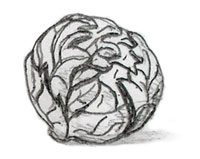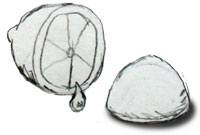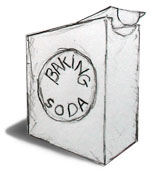 Experiment
4
Experiment
4
In this experiment you will use red cabbage juice to find out the pH
of different common substances and liquids. You can compare the results
from this experiment with the results found from the soil samples taken
from the five suspects.
I]
Hypothesis Cabbage juice will consistently exhibit
one color when mixed with an acid, another color when mixed with a base,
and another color when mixed with neutral pH liquids.
What
is pH? pH is used to measure whether or not a solution is an
acid, an base or neutral. A neutral solution is neither an acid nor
a base. Pure water is a neutral liquid.
 What
is an acid? Most of us our familiar with term acid. For years
Hollywood has shown us some extreme examples of acids. You might have
seen a movie in which a bottle of acid drops, breaks and burns a hole
in the floor. Indeed, very strong acids can burn and should be handled
with care. Some acids are so strong that just smelling them can burn
your nose! However, we are surrounded by many other weaker acids, which
are safe to handle. Some examples of acids include: lemon juice, orange
juice and vinegar. Red cabbage juice will turn into a different color
when mixed with an acid.
What
is an acid? Most of us our familiar with term acid. For years
Hollywood has shown us some extreme examples of acids. You might have
seen a movie in which a bottle of acid drops, breaks and burns a hole
in the floor. Indeed, very strong acids can burn and should be handled
with care. Some acids are so strong that just smelling them can burn
your nose! However, we are surrounded by many other weaker acids, which
are safe to handle. Some examples of acids include: lemon juice, orange
juice and vinegar. Red cabbage juice will turn into a different color
when mixed with an acid.

What
is a base? Strong bases can be just as corrosive and dangerous
to handle as strong acids. Some drain cleaners that you use to dissolve
clogs are strong bases. However, like acids some bases are weak bases
and are safe to handle. Baking soda and dish soap are two bases that
are safe to touch. Red cabbage juice will also turn colors when mixed
with a base. This color is a different color than the color it changed
into when mixed with an acid.
Help!
Watson could not remember what colors red cabbage juice exhibits when
it comes in contact with an acid or a base. You can help him remember
by comparing your results with the results he got when he used red cabbage
juice to determine the pH of the suspect's soil samples.
II]
Materials needed









